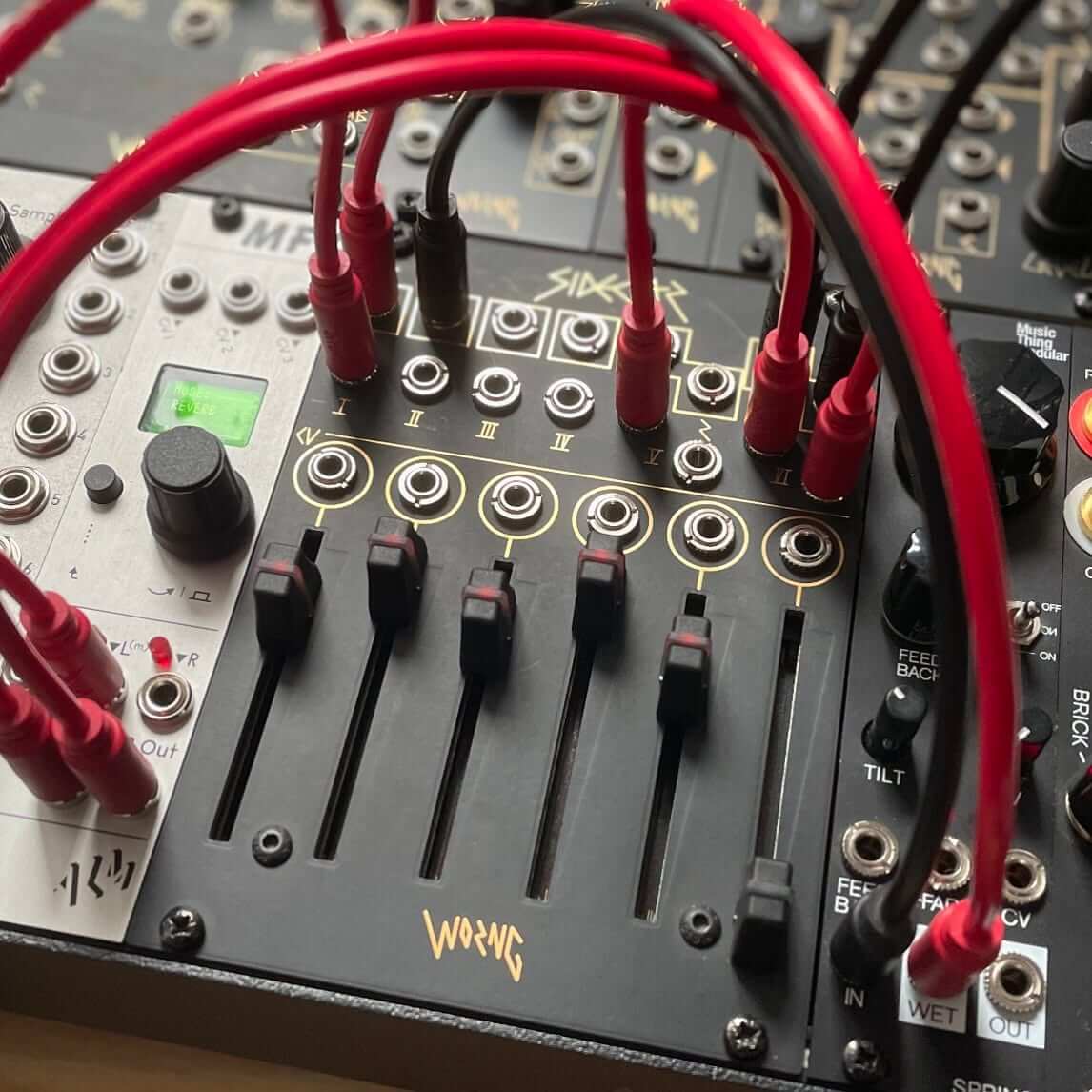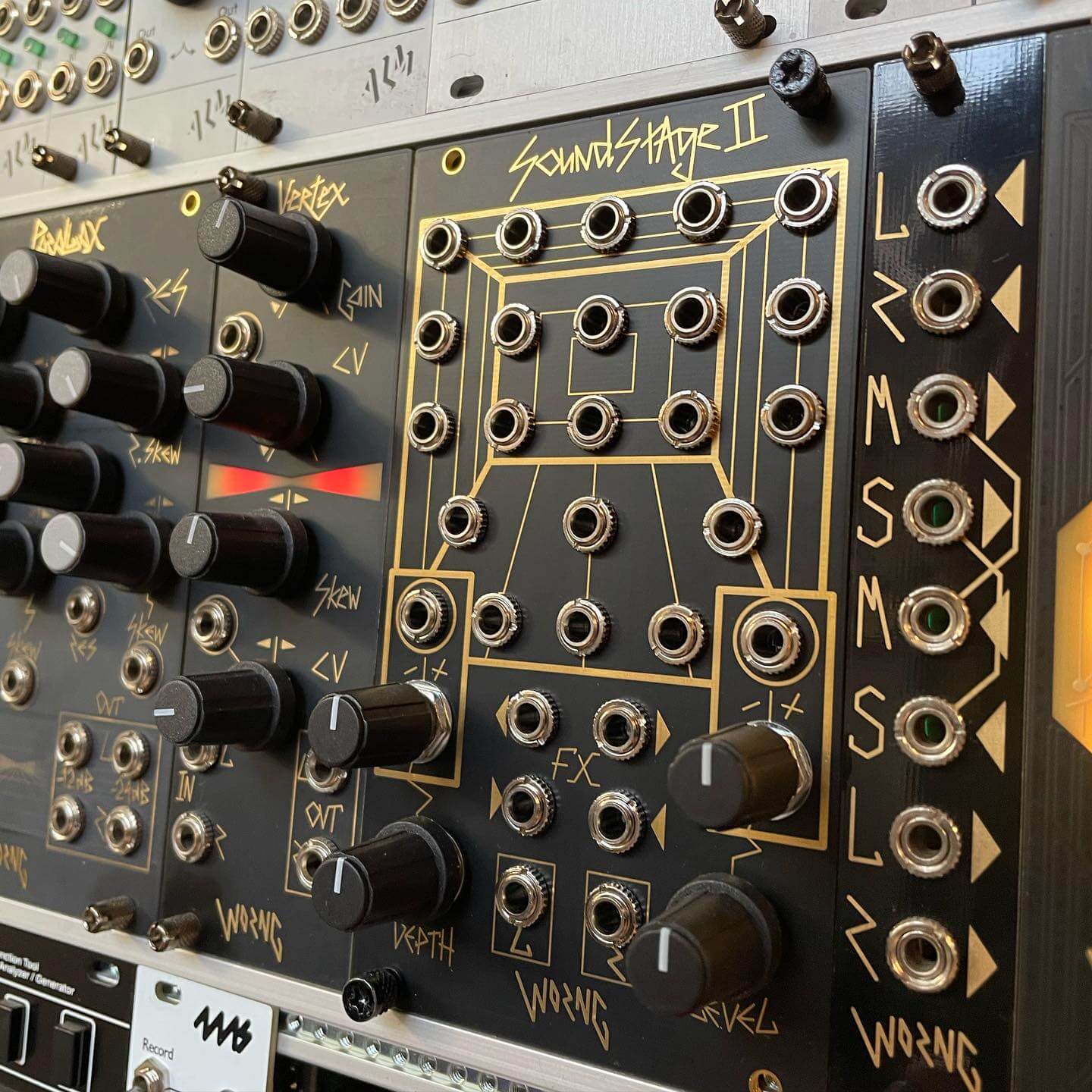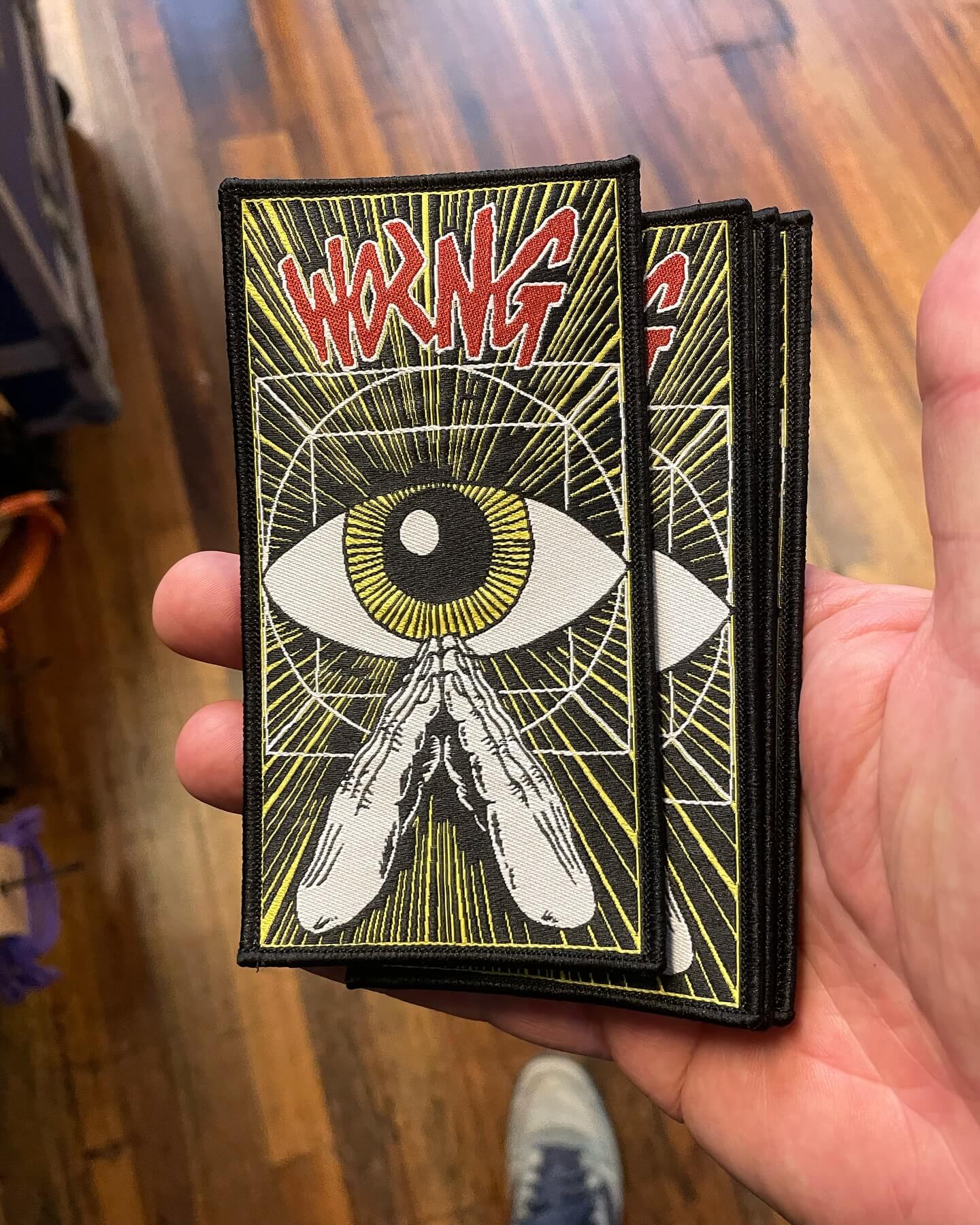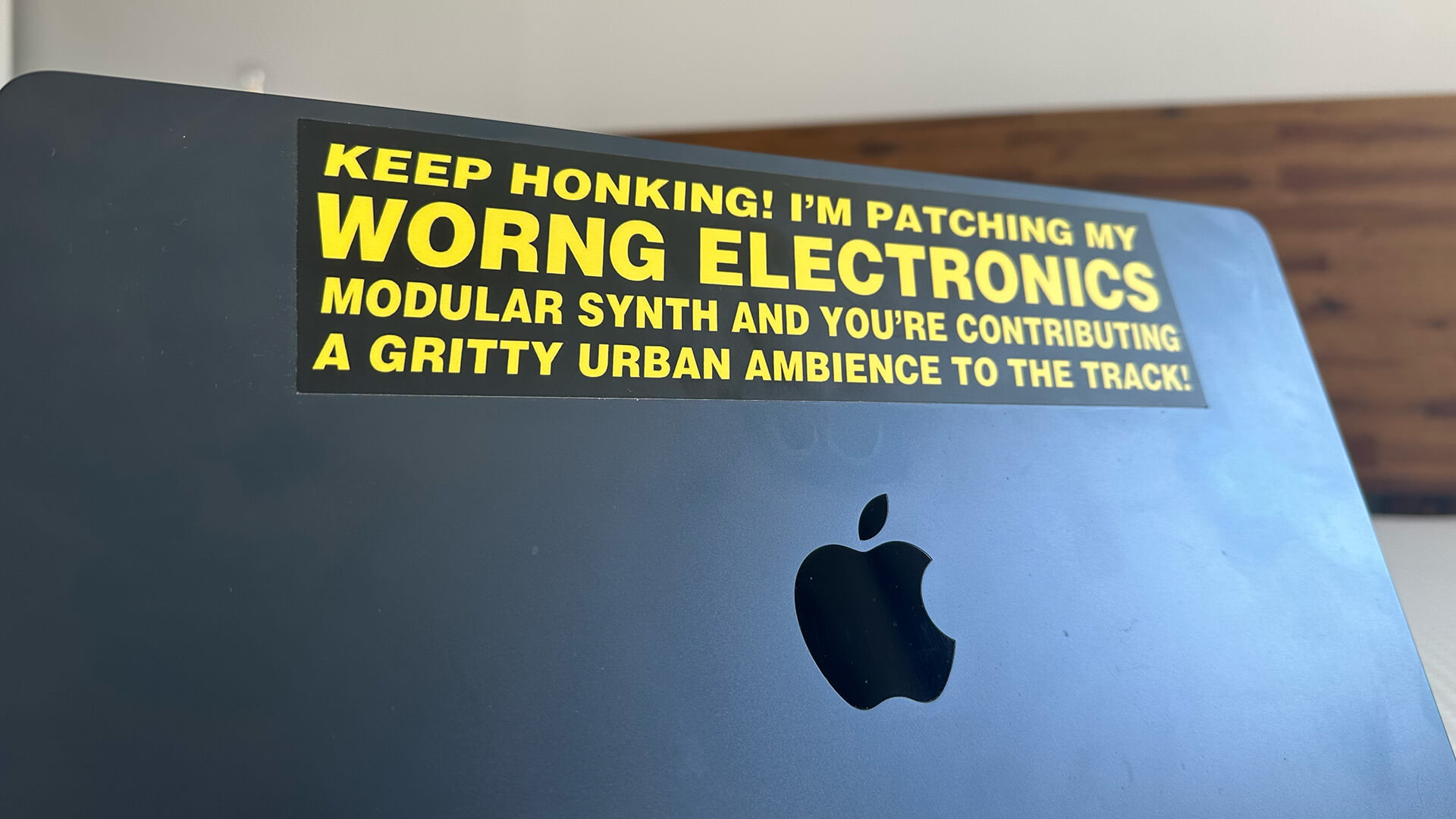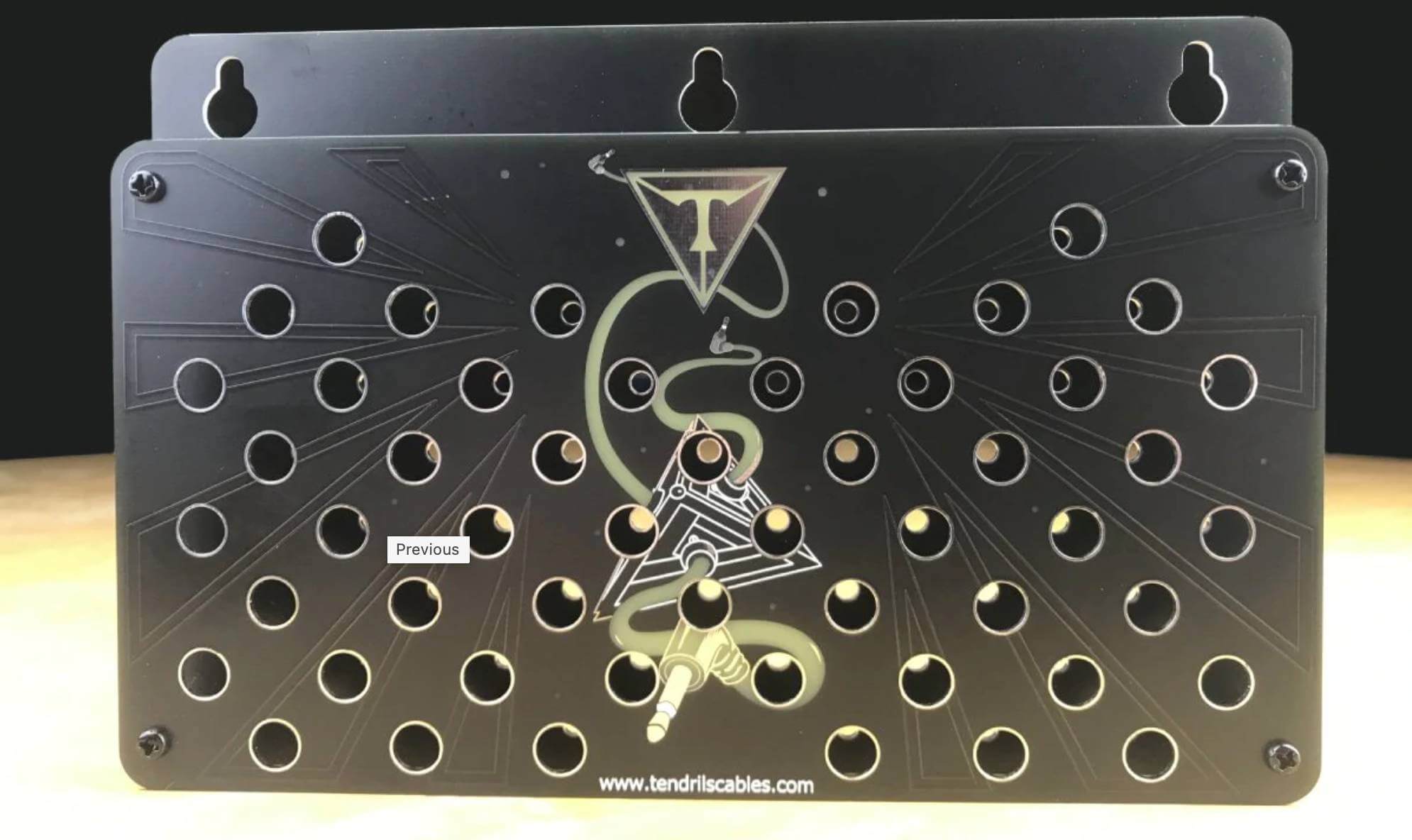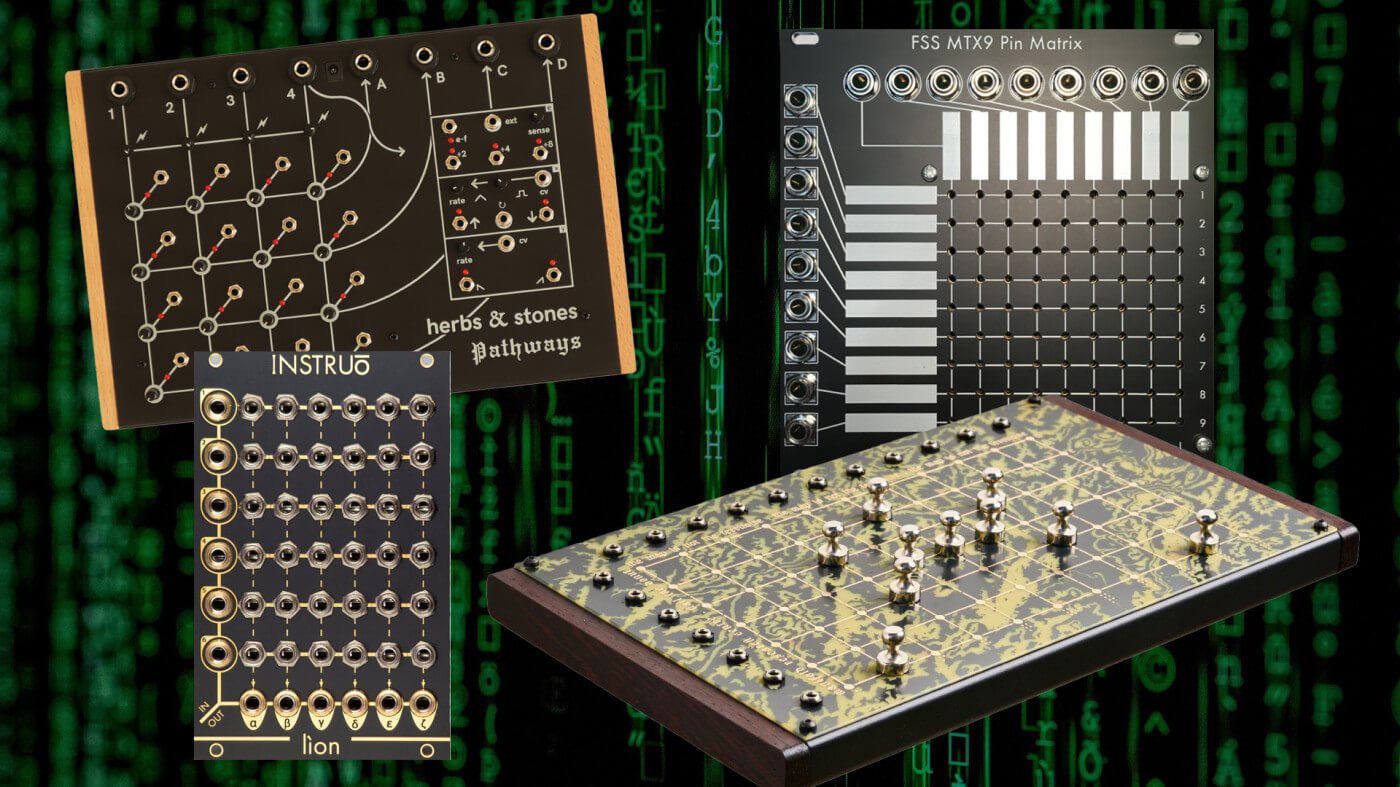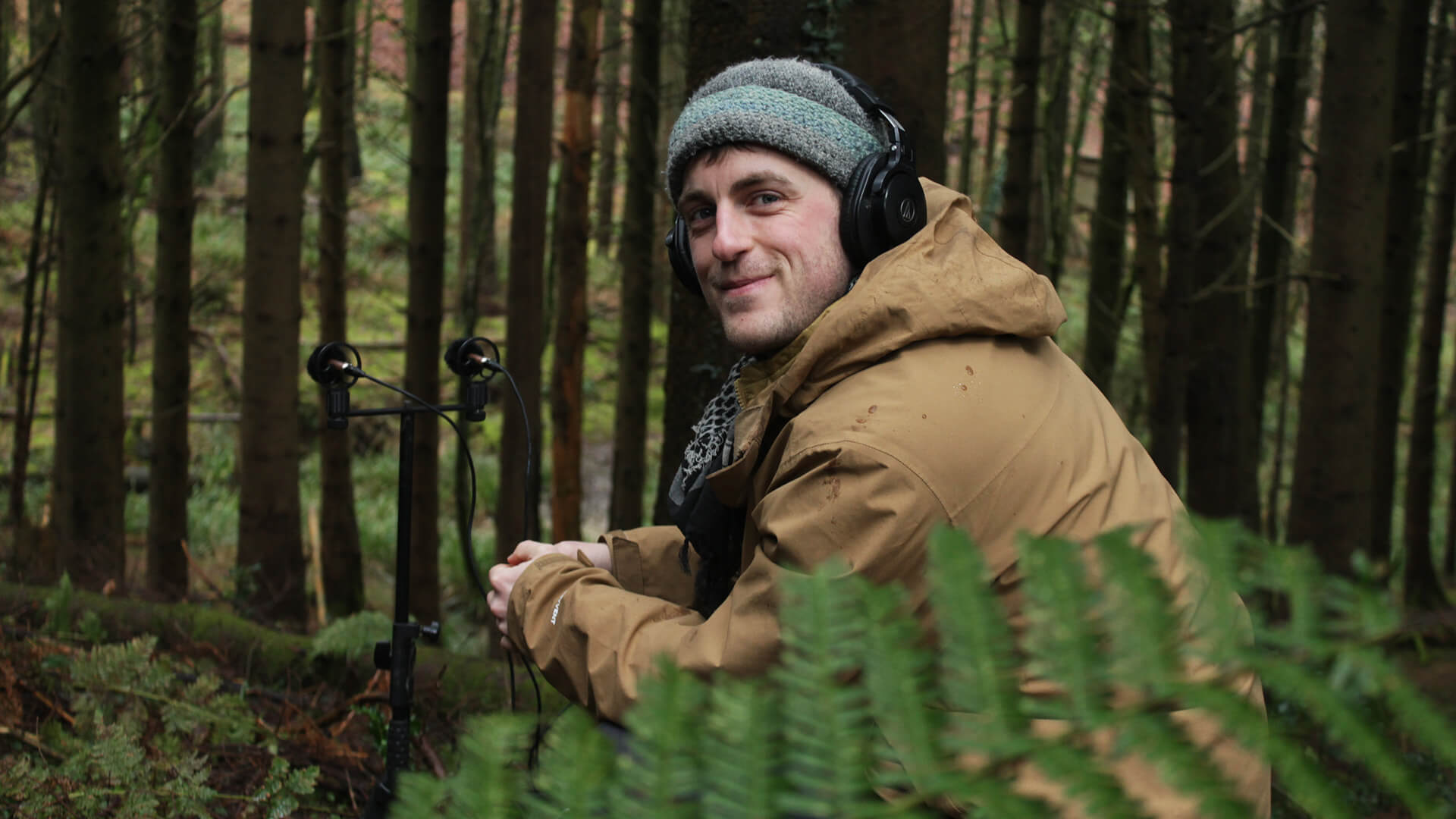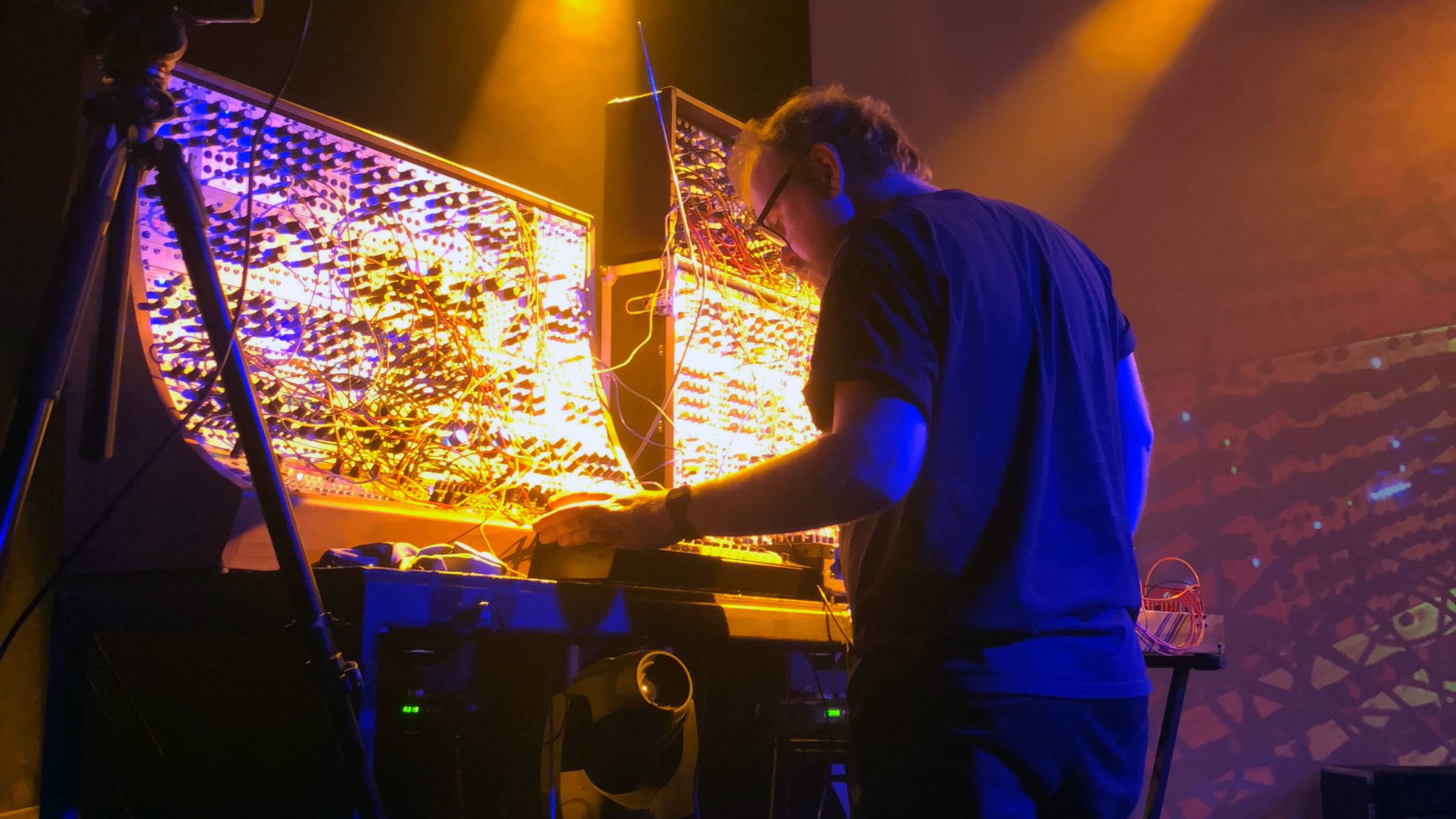
Doing it right: a chat with Morgan McWaters of WORNG Electronics
WORNG Electronics is one of our favourite Eurorack brands, with a small but perfectly formed catalogue of innovative analogue modules. Drawing on Melbourne-based founder Morgan McWaters’ years of expertise in live sound engineering, the range includes a great-sounding oscillator, filter and VCA as well as high-quality mixing solutions, all with a focus on stereo processing. We caught up with Morgan recently for a chat about the story of the brand, his design philosophy, and how his modules can help you finish more music...
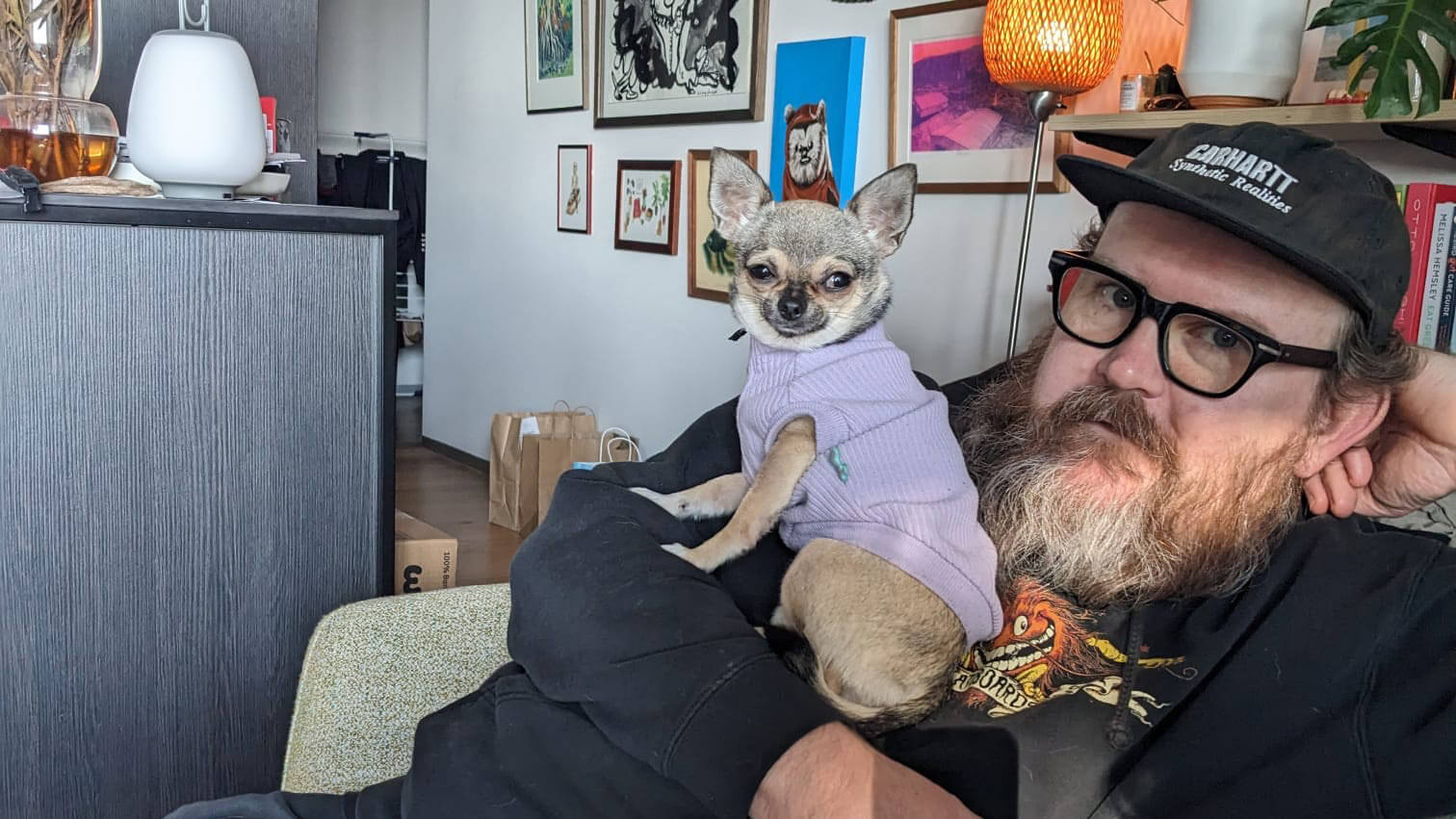 Morgan (pictured right) and assistant Reggie
Morgan (pictured right) and assistant ReggieLike so many great companies, the origin story of WORNG Electronics owes more to happy accidents than grand planning. Morgan explains: “When I was in my early twenties, my housemates were in a band and they had this show coming up. They borrowed a mixer so that they could mix everything on stage, and no one knew how to use it. So I was like, ‘Oh, I can read the manual and figure that out’. I ended up playing in that band for a while, and went to sound engineering school and started working doing sound engineering - mostly live stuff with a little bit of recording.”
Soon he was also working at the University of Melbourne, where he helped students with prototyping in the Industrial Design department. Meanwhile, he’d started working on DIY projects - “a theremin kit, a mixer kit; things like that” - and around 2009, he started getting into Eurorack. He says: “I was building things and working as a sound engineer, and then working in the university, doing research and user interface stuff, and it kind of all came together.”
The first WORNG Electronics product was the LRMSMSLR, a mid/side encoder-decoder for working with stereo signals. Morgan explains: “I'd been interested in mid/side stuff from my sound engineering background for ages. One day in 2015 I Googled ‘mid/side Eurorack processor’, and a post came up on ModWiggler. I had a look at it, and it was me from five years beforehand, saying that someone should make a Eurorack module that does left/right to mid/side and mid /side to left/right. And I was like, ‘OK, well, I guess I should do that then’.
“I ended up with ten circuit boards but I only wanted two of them. So I asked, ‘Does anyone want to buy one of these?’ And people bought them. Then more people wanted them. And then Steve from Thonk wanted to buy a hundred and I was like, ‘Oh, I guess I'm a company now’. And that's kind of how it started, accidentally.
“I'd always talked with my friends about making effects. When I was doing DIY stuff, I always thought it would be really cool to design stuff. But I guess there wasn't really a need to do it until I realised that if I didn't make the things I wanted, then no one was going to.”
Morgan’s design approach, like many small Eurorack makers, stems from this desire to make something he wants to use that doesn’t exist elsewhere, rather than what he thinks a particular type of user might want.
He explains: “When I designed the Sidecar, for example, it was basically just that I wanted a VCA with faders on it, where the inputs and outputs were away from the faders, so I could use it without cables getting in the way. I wasn't thinking, ‘This is an amazing, revolutionary product that everyone's going to want’. It was more, ‘There should be one like this’. So I did it.
“I designed other things, like the Parallax stereo filter and Vertex stereo VCA, because I wanted stereo things where I could control the ‘stereo-ness’ with a knob, rather than having to mult things and run into multiple filters or VCAs. So yeah, it’s all basically just stuff that I've wanted to use and that I thought should exist.”
And while his designs all implement high-quality analogue engineering, Morgan is less concerned about innovations in circuit design than he is about the user experience.
He says: “There are people who are much better at analogue circuits than me. Like the Joranalogue stuff - Joran is a much better analogue engineer than I am. I think of design more as an interface problem - I'm looking at the way the person interacts with something. And I think there are always ways that things could be done better in terms of that. My focus is not so much on the circuits themselves as the way you use the circuits.”
He adds: “There are a lot of very small things in Eurorack that are not very fun to use. And ever since I got into modular, I have played live, so it's always been important to me to have things that are human-sized.”
As well as interface design, Morgan has a keen interest in areas that have historically tended to be neglected in Eurorack, like end-of-chain mixing, stereo imaging and gain staging, but he’s all too aware that these aren’t always the ‘sexiest’ things to grab the attention of the average Eurorack user.
He says: “There are a lot of modules, particularly digital processing modules, which are almost like an entire synth in a module. And I think it's easier for people to get excited about something like that than something that's just like, a mixer that will, you know, be a little bit easier to use. I end up having to spend a lot of time explaining why things like headroom are important, and stereo space, and how to make a nice mix.”
When asked which module he’s most proud of, Morgan singles out the SoundStage, now in its MkII incarnation. This unique ‘stereo spectral mixer’ has a matrix of 21 inputs, with sources are panned in the stereo field according to their horizontal position, and filtered to determine their place in the frequency spectrum based on their vertical position, helping users design a clean, spectrally balanced stereo mix with minimum fuss.
Morgan says: “It was just a weird idea that popped into my head, and there hasn't been anything like it, really, before or since. What I often say about the Soundstage II, and the Sidecar, is that if people add them to their system, they're going to end up finishing more music. They just mean you don’t have to worry about the mixing process when you’re at the creative stage.”
WORNG Electronics has some of the best merch and branding in Eurorack-land, with the sort of wry humour and smart pop culture references that are rarely seen in the sometimes po-faced world of modular synths. A lot of this sensibility stems from Morgan’s lifelong love of skateboarding culture and independent music.
He says: “I used to skate as a teenager, and then I got back into it again as an old person a few years ago. I’ve kind of slowed down again now, because I keep getting hurt. But yeah, I guess there are similarities between skateboard companies and synth companies - at least the smaller ones. They’re both run by people where it's like, ‘I want to do this thing’, and if you've got the ideas, you can just kind of make it happen, I guess.
“When you play in a small to medium sized band, and you have to organise recordings, do press, talk to record labels, get records made, and organise shows and tours, you end up with all of these skills that are really useful if you have a small business.
“All of the merch that I've done has just come out of situations where I’ve been working on something and had an idea for a sticker or whatever, like the Wu-Tang-inspired stickers that I did. And it's just like, ‘Oh, it'd be funny if I did this’. And then I do it. I'll spend a couple of thousand dollars getting a bunch of T-shirts made every year, and I end up giving most of them away. I've never really thought about whether that’s a good value proposition, or gives a good return on investment or whatever. But you know, if I was trying to maximise profit, then I wouldn't be designing modules!”
WORNG Electronics is based in Melbourne, a long way away from most of the Eurorack community. But the internet means geographical distance is less of an issue than it once might have been, and Melbourne has a thriving electronic music scene of its own which means it never feels like Morgan’s operating in a vacuum.
He says: “I have my yearly trip to Superbooth in Berlin, and I try to come to the UK as well when I can. I love connecting with everybody. You come back to Australia, and there's just not that sort of density of community that there is in Europe or the US.
“But we do have things like MESS [the Melbourne Electronic Sound Studio]. I worked there for a while, doing maintenance on the collection. And a new place has just opened up called SynthTemple, which is run by one of the guys who was involved with MESS. Steve Jones, who's a very good synth tech, is managing it and maintaining things there. I don't know if there would be anywhere else in the world that would have two of those kinds of crazy places where you have such an opportunity to use some amazing synths. So we're pretty lucky.”
There are a now a number of local brands, from Melbourne Instruments, who developed proprietary motorised knob technology for their high-end Nina and Delia synths and Roto-Control MIDI controller, to Forge-TME, creator of the Vhikk X drone voice, which was arguably the most sought-after Eurorack module of 2024.
Morgan says: “Fletcher, who does the Forge-TME stuff, has a studio and workshop that I've been going over to and we’ve been hanging out. We're not really working on anything, per se, just chatting about synth stuff. But there can be a spark that comes when you're talking to people about stuff, and the ideas can just pop up out of nowhere. That can't really happen as easily if you're not in the same space.
He adds “When I've been over for Superbooth I would jam a whole year's worth of that sort of thing into a week. Particularly the first two times when I just had one or two modules out, I was afraid to leave the booth in case someone important came by. You spend so long talking to people that you end up in these weird loops of just repeating the same thing over and over.
“Now I try to take a bit more time away from the booth to chat with people. I guess I thought, to begin with, that Superbooth was this important industry thing where I had to network or whatever. But then I realised that's not what Superbooth is about - it's more about just having a chat with someone in the line to get a drink or something.”
And speaking of the Berlin event, Morgan signs off with a tease: “I'm working on a few more things that will be out this year. Nothing that I can officially announce yet, but there should be something new to show at Superbooth.”
Worng Electronics Sidecar Eurorack Mixing VCA Module

£329.00
SideCar from WORNG Electronics is a six-channel mixing VCA (4x mono, 2x stereo) with 45mm faders and proprietary CV shaping circuitry to deliver high resolution...… read more
Worng Electronics SoundStage II Eurorack Stereo Spectral Mixer Module

£349.00
SoundStage II Stereo Spectral Mixer SoundStage II is a stereo mixer module unlike any other. Completely reimagining what a mixer needs to be in a...… read more
Worng Electronics Acronym Eurorack Oscillator Module

£395.00
Manufacturer's description ACRONYM stands for Analogue CoRe Oscillator New tYpe: Morphing. It combines a solid-tracking triangle core analogue VCO with some unique waveshaping circuits, and packages...… read more
